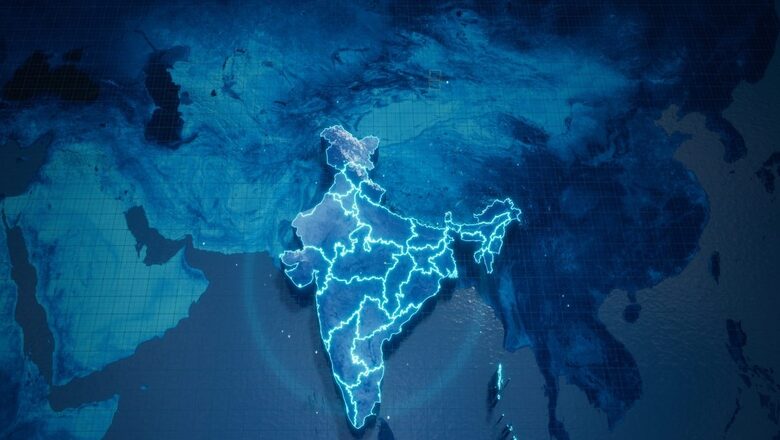
views
The other name for disruption is artificial intelligence (AI). This is a disruption pegged to be bigger and far more impactful than the coming of the internet and the World Wide Web. India realises that AI will be the next frontier of cutthroat global competition. Today, India is a country on a mission. A mission to not just develop an indigenous and sovereign AI ecosystem in the country, but to also become a net exporter of AI technologies to the world, especially to countries in the Global South.
Prime Minister Narendra Modi alluded to this last year, when in a social media post he said, “India reaffirms its commitment to harnessing technology, particularly AI, for the welfare of people, ensuring that nations of the Global South are not the last to reap its benefits.”
To build an indigenous AI ecosystem in the country, the Ministry of Electronics and IT will soon seek the Union cabinet’s approval for an ‘India AI Mission’. This is an ambitious program which includes the setting up of GPU-based servers in public-private partnership mode with an outlay of over Rs 10,000 crore. Under the mission, India aims to build a compute capacity of anywhere between 10,000 to 30,000 graphic processing units (GPUs) under the public-private partnership model. Further, about 1,000 to 2,000 GPUs will be built through the Centre for Development of Advanced Computing (C-DAC), which is a public sector undertaking.
The move comes in the backdrop of dedicated working groups being formed by the Modi government on AI, recommending setting up a three-tier compute infrastructure comprising 24,500 GPUs. The groups have also recommended setting up best-in-class AI computing infrastructure at five locations with 3,000 AI Petaflops computing power, with 15 times more capacity than the highest capacity installed at present.
The government is moving at a rapid pace to catch up with international leaders in the world of AI. At present, the US and China lead in computing infrastructure required for the development of AI technology. According to the Top 500 website, top-performing supercomputers are located in the US, Europe, Japan, China, South Korea, and Saudi Arabia where purchasing power parity is high. India is keen to be a part of that club, which will further bolster its credentials as a leader of the Global South that developing countries can rely on for AI technologies.
In order to motivate private players to set up computing centres in the country, the Centre is devising various incentive structures – ranging from a capital expenditure subsidy model like has been done in the semiconductor sector, to even offering companies a ‘usage fee’. This will enhance India’s computing capacity, which will, in turn, prove to be a game-changer for domestic AI startups.
Consequently, startups will not need to invest in GPUs, and will instead be able to use government-provided computational capacity at much lower costs. Needless to say, this will give Indian startups a competitive edge globally. This will also strengthen India’s already incredible Digital Public Infrastructure, which has earned accolades around the world for the scale of transformation it has ushered in.
In December last year, Minister of State (MoS) for Information Technology Rajeev Chandrasekhar revealed that the Centre will also deploy ‘financial resources’ to build foundational AI models, large language models (LLMs), and various use cases for emerging technology.
Keeping Track of the “India AI” Buzzword
India’s messaging has been on point so far. It is determined to play a major role internationally in shaping the way countries deal with the emergence of AI and its continuously evolving nature. At the heart of India’s approach is a willingness to embrace all emerging technologies, including AI, with necessary guardrails of course. In December 2023, India hosted the Global Partnership on Artificial Intelligence Summit in New Delhi, where influential minds from various sectors gathered to discuss and collaborate on the future of AI.
India is home to more than 70 GenAI startups that have raised capital in excess of $440 million between 2019 and Q3 2023. According to Inc42, the homegrown GenAI market of India is expected to grow to a market size of $17 billion by 2030 from $1.1 billion last year. Moreover, it is expected that the digital economy will contribute to 20 per cent of India’s GDP by 2026, and AI will play an instrumental role in achieving this goal. Also, by 2026, India hopes for the size of its digital economy to be $1 trillion alone. In 2014, the share of the digital economy to the GDP was a mere 4.5 per cent, so the jump will definitely be stark.
India is aware of the risks that are typically associated with new and emerging technologies. Therefore, the government plans to restrict access to datasets to only those artificial intelligence models that are trusted. The Centre is also considering issuing a directive to big tech companies like Facebook, Google and Amazon to share anonymised personal data in their possession with the India Datasets platform.
India’s ambitious plans for AI reflect a commitment to global leadership in technology. Its strategic investments, public-private partnership push in AI, and incentives for private players position India as an upcoming force in the ever-evolving AI landscape. With a focus on responsible AI deployment, India aims to contribute significantly to the digital economy and shape the future of artificial intelligence on the global stage.
Views expressed in the above piece are personal and solely that of the author. They do not necessarily reflect News18’s views.




















Comments
0 comment